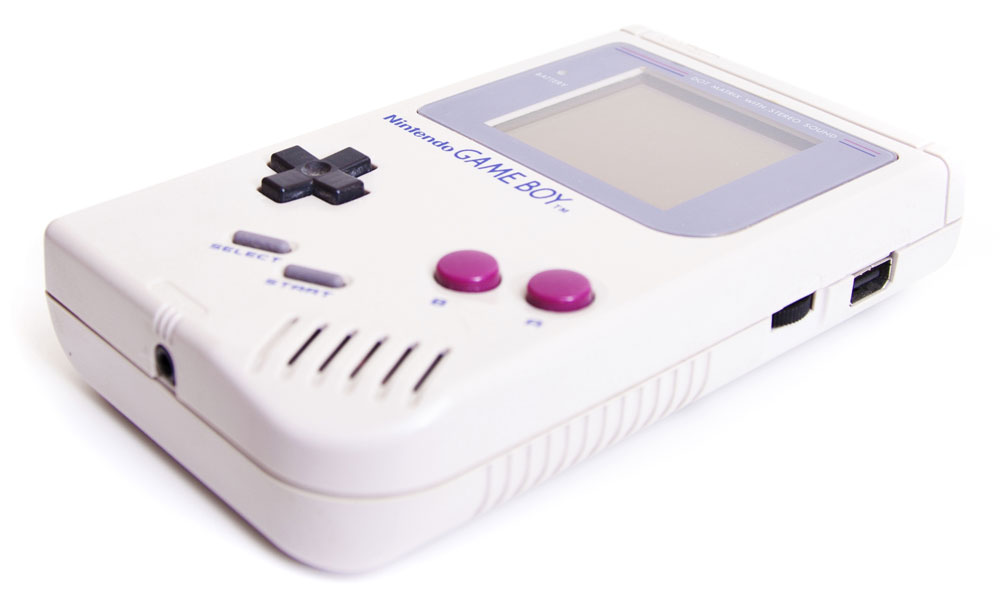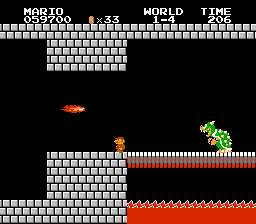
What Nintendo Teaches About Creative Innovation
Hey, gamers, this one is for you: Your technology strategy doesn't necessarily need the latest bells and whistles to succeed. Sometimes, the best strategy involves taking a different approach to what's already out there. That's how Nintendo powers up its bottom line.
So, true story about me: Back when I was a kid, I was really into old-school video games.

Super Mario Bros.? This was usually how things ended for me.

Super Mario Bros. 3? I knew where all the warp whistles were.

Legend of Zelda? I was always ready for an adventure.

Tetris? All over that. (And yes, I owned a Game Genie.)
At some point, though, my interest in modern video games faded—I’d say around the time of the first PlayStation. It became all about artifice at the cost of simplicity. Despite this, I still go back to replay old NES and Super NES games from time to time.
I think I’ve always held this fairly nerdy interest because simplicity really appeals to me. I’m the kind of guy who will roll his eyes at the idea of buying a PlayStation 4 or Xbox One, but will spend hours playing TwoDots on his phone.
But even to this day, I still have a soft spot for Nintendo, a company that has always gone by its own whim. While its competitors moved to CDs and DVDs, it was making cartridges or proprietary discs. When its competitors focused on graphics, it focused on control. And even now, as its competition tries to own the living room, it’s perfectly content with zagging as others zig.
For all its ups and downs, Nintendo has managed to stay relevant to millions of gamers because it’s maintained a tight focus on its culture.
Thinking Laterally
The video game industry offers a nice perspective from which to consider business issues, because (much like associations) a strong vibe of “what have you done for me lately?” drives consumer impulse. Gamers hold warm memories of their childhoods, but they get older and want different things out of their games.
It’s an industry that’s constantly getting disrupted, too, with new graphics technologies, styles of play, and types of interactivity keeping developers on their toes. That’s the game Nintendo’s two main competitors, Sony and Microsoft, play.
But Nintendo has succeeded on its own terms in part because it’s willing to buck common industry thinking. Here’s an example: Gunpei Yokoi, an early company employee who masterminded one of the company’s most popular products, the Game Boy, advocated a design philosophy he called “Lateral Thinking with Withered Technology.”
In a nutshell, here’s what that means: Rather than trying to put the latest technology into a given device, the company builds with older, off-the-shelf parts, and then extends their lifespan by making the cheap commodity technology do useful, innovative things.
Ahead of the Game Boy’s 1989 launch, Yokoi decided a cheaper device that could maintain long battery life was of better use to consumers than a device with a color screen. Nintendo’s competitors at the time chose color screens, more horsepower, and higher prices—and Nintendo outsold all of them by a wide margin, thanks in part to fun games, particularly a certain Russian title. When the company finally made the Game Boy Color in 1998, the device was cheap and had a ton of battery life.
As usability expert Lukas Mathis noted last year, this philosophy translates to many of the company’s biggest successes—particularly the Wii, which outsold its competitors despite being a less robust piece of hardware than the PlayStation 3 or Xbox 360. The secret was in the device’s controls, which encouraged a more physical style of play that hadn’t been seen in a video game before.
Now this strategy didn’t win overnight—as this excerpt from the book Console Wars recently highlighted, a lot of luck and business savvy put Nintendo on top in the ’80s and ’90s—but as approaches to technology go, it’s a pretty brilliant one.
Momentum Through Creativity
That’s not to say Nintendo hasn’t had its hills and valleys—especially lately. The Wii was a big hit but failed to maintain its early momentum. With the rise of the iPhone and Android, Nintendo’s mobile devices aren’t having the impact they once had, though they remain consistent sellers.
And its current console, the Wii U, has struggled thus far, selling fewer units in a year and a half than the PlayStation 4 sold in half a year.
But rather than throwing in the towel, Nintendo let its creative juices flow, and they were on display at last week’s E3 conference, which many critics suggested was the start of a comeback for a company that had been on a downswing. At the event, the company introduced a number of innovative game titles, including something called “Mario Maker,” which allows players to essentially build their own Super Mario Bros. levels.
It’s clever. It touches the right nerve for certain kinds of gamers. And it wasn’t even the game that got the biggest buzz. (That honor goes to the upcoming Legend of Zelda game.)
But it shows something really fascinating about Nintendo’s approach that ties into its strategic philosophy. Mario Maker started as an internal tool for the company’s developers to build levels for games. Someone had the bright idea of releasing it as a consumer product, and suddenly it looks like a stroke of genius.
Find Extra Lives
For all its ups and downs, Nintendo has managed to stay relevant to millions of gamers because they’ve maintained a tight focus on their culture.
I look at the things it’s done successfully, and I see lessons that translate well for associations. While keeping an eye on trends, Nintendo focuses on what works for it—strong branding, a stable of great characters to pull from, good execution, and a willingness to buck the logic driving the rest of the industry. There’s something to be said for an organization that knows what works for its audience, without focusing so intently on what the competition is doing that it misses what’s going right.
When you’re building an app or a website or even a public database, you may not have the resources of your competition—competition that’s increasingly looking like the disruptive startups all over Silicon Valley. But by showing a willingness to think resourcefully and find gaps that everyone else has overlooked, there’s still room to win.
You may not even need a warp whistle to take it to the next level.
The Game Boy was Nintendo's design philosophy in action. (iStock Editorial/Thinkstock)






Comments